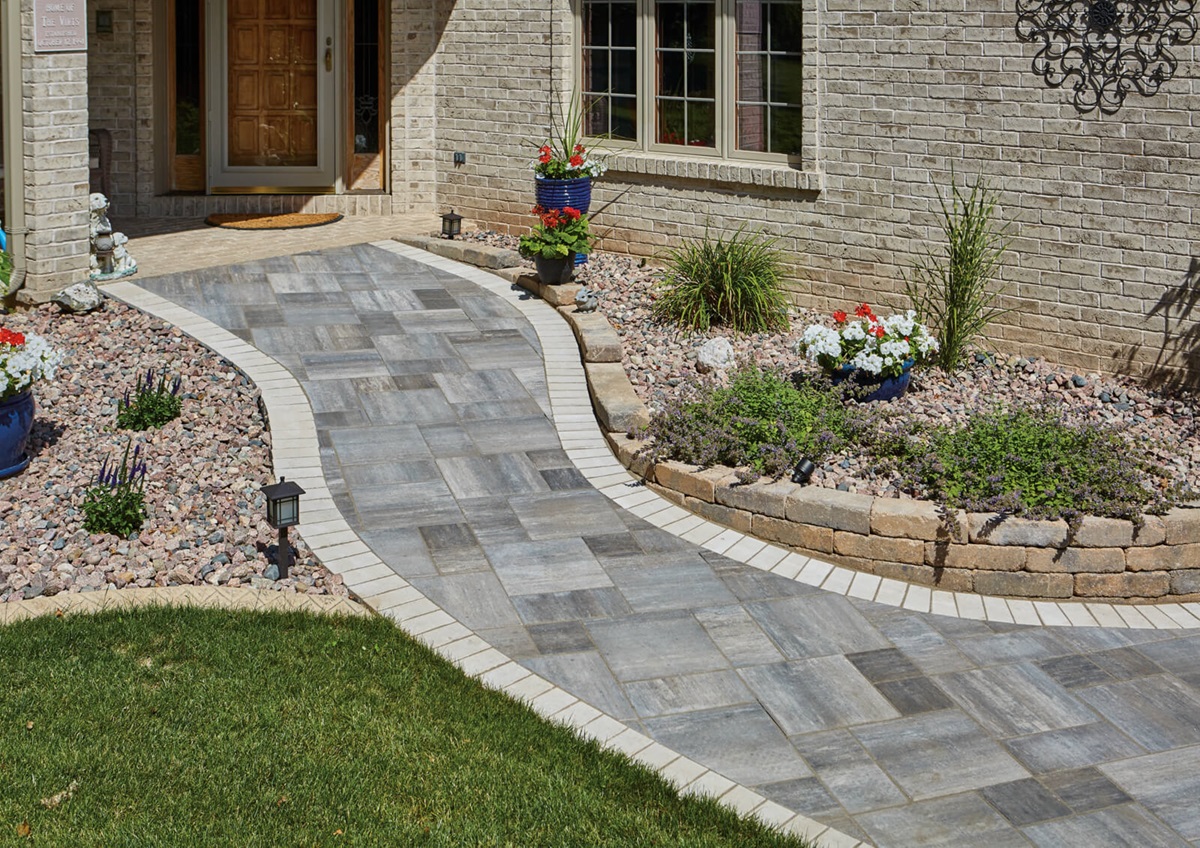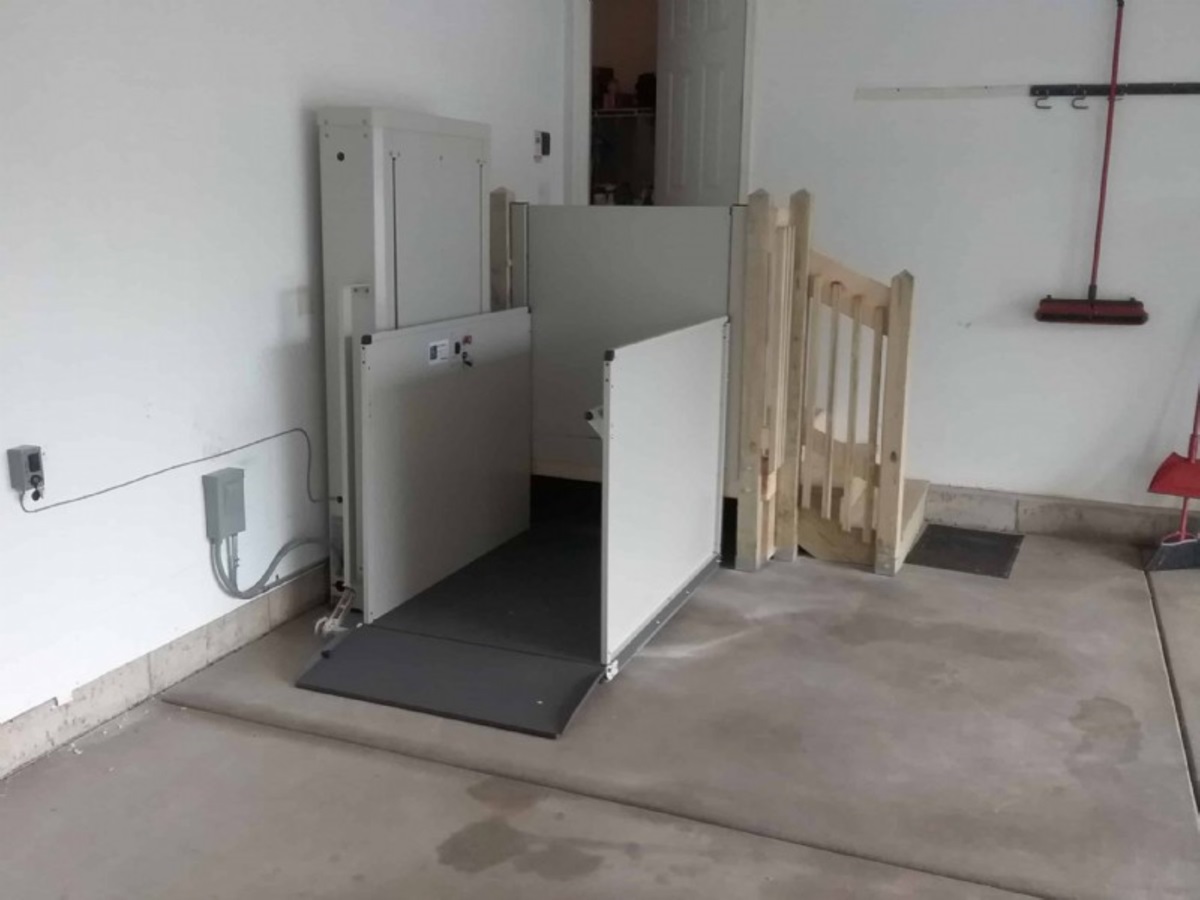Lifescape
By Janet Armstrong, Accredited Interior Designer, CAPS
When we talk about safe, healthy living in our homes as we strive to live in place as long as possible, we tend to discuss interior spaces, such as kitchens, bathrooms, laundry rooms and stairwells. The part we don’t often read about or discuss is safe access into our homes. As health changes, access and approach are as critical, perhaps even more critical, than interior modifications.

We are all familiar with access ramps that are incorporated into the front of homes to facilitate access for those using mobility aides such as wheelchairs or walkers. This access feature is relatively easy to construct and install, but there are a number of considerations beyond materials and location. There are strict specifications on rise and run (slope), as well as railings. Consider, too, that depending on the height of the door and therefore the length of ramp, a large amount of space may be required to accommodate a long ramp or a ramp with switchbacks. From a comfort and safety perspective, the weather must be considered since snow, ice and heavy rain can create slippery conditions. Once a ramp is installed, there is typically a requirement for some landscaping work as well. The one aspect that is not often discussed or considered is the very public view of the ramp that indicates someone vulnerable occupies the home. Sadly, the home can become a target for those who might take advantage. While a ramp is a common option, others are available that require less space and are more aesthetically pleasing.
Vertical lifts are growing in popularity and can be installed on the exterior of your home or in the garage. The lift has sufficient space for a wheelchair with occupant and has sides and a gate to ensure safety while in operation. The weather in this part of the world means an interior lift in a garage is the best location and it takes up far less space than a ramp, is more discreet and does not require landscaping or major work to prepare for installation.
An option that works well for those who use walkers or canes involves large landscape stones that create platforms. These also benefit people who are unsteady and challenged with mounting steps. The stones can be set in an aesthetically pleasing way that enhances curb appeal and at a step depth that makes it easier to access the entrance. Sections of railing can be installed to provide support to users and they can be positioned in such a way that they can be an attractive feature that harmonizes beautifully with the landscape. This option does require landscaping work, but the final result is discreet enough that one would never know the true purpose. In the same vein, if the front door is basically at ground level, a slightly sloping walkway constructed with pavers or cement can improve and enhance accessibility. When the landscaping around the walkway is completed, it blends into the facade and provides safe easy access.

Additional levels of exterior lighting, beyond the traditional front door light, are necessary to enhance safe access to your home. A well-lit route from the driveway to the door provides more than a beautiful exterior, ambience and highlighting of architectural features. It provides a clearly visible pathway to your door and prevents you and visitors from slipping, tripping or falling. If you have a ramp, lighting added to the underside of the handrail and/or along the bottom edge of the railing will illuminate the way from the driveway to the door. In the instance of landscape stone platforms, lighting can be added to the gardens around the stones or the handrails to ensure clear access and minimize the risk of falls. For walkways, landscape lighting installed adjacent to the walk can provide sufficient illumination to support a safe route to the door.
Now that I have covered safe approach and access to the door, what about opening the door? We have all had those moments when it is a challenge to unlock our door because our arms are full of groceries, mail or parcels. Add in any difficulties with respect to reach, strength or dexterity and unlocking the door becomes even more difficult. First off, assess the amount of light at the door and whether the lock system is well illuminated. Next, consider the type of locking system you may require. If reach, strength or dexterity are a challenge, smart door-lock technology is widely available and designed to ensure your home is accessible with the added benefit of convenience and increased security. Access is typically acquired via the use of biometric authentication (voice, fingerprints, iris, facial, palm or finger vein patterns) so the door can only be opened by those who are authorized to do so. Installed at a height that is reachable for those in a seated position, smart technology is a game changer for independence and self-sufficiency.
As you look around your home, considering modifications to enable you to live in place well into the future, remember to step outside and walk the approach from the roadway to your front door. Think of all elements of the route from the perspective of using a cane, wheelchair or walker. That way you’ll gain an appreciation for any necessary changes to support safe, comfortable access into your home.
Janet Armstrong (www.simplyswankdecor.ca) is a graduate of the Interior Design Institute of Canada, CAPS (Certified Aging in Place Specialist) and past chair of the Decorators and Designers Association of Canada (DDA Canada).






